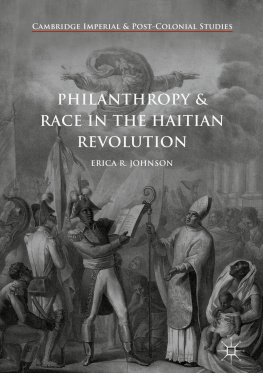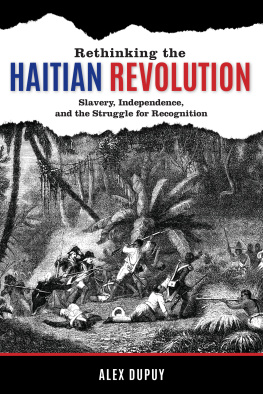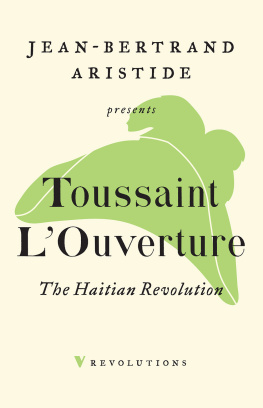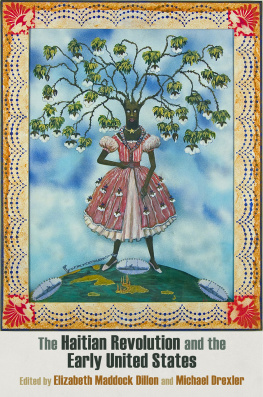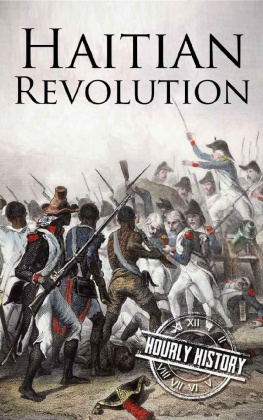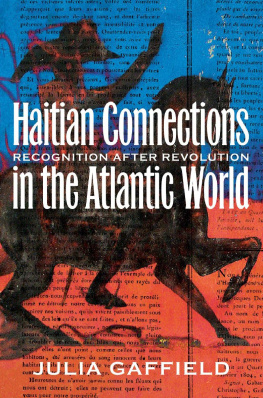In 1810, the white judge of Pointe Coupe parish in Louisiana, Pierre Benonime Dormenona refugee from the Haitian Revolutionfaced accusations that he aided and assisted the negroes in Santo Domingo in their horrible massacres, and other outrages against the whites, in and about the year 1793. Further, the prosecution alleged Dormenon took a mixed-race bride. There was neither a marriage certificate nor firsthand accounts of the relationship. The prosecution introduced the hearsay testimony to reinforce the accusation that Dormenon was a black sympathizer. This case raises important historical questions about racial fluidity in colonial Saint-Domingue and the role of whites in the Haitian Revolution. Were there other whites who worked with the enslaved in the Haitian Revolution to overthrow slavery? Had any of those whites advocated for peoples of African descent before the revolution? What moved them to act in such a way? In answering these questions, this book complicates the racial narrative of the Haitian Revolution.
As I researched, I found that a minority of primarily white, male, French philanthropists used their social standing and talents to improve the lives of peoples of African descent in colonial Saint-Domingue during the crucial period of the Haitian Revolution. Participants in and products of the Enlightenment philanthropic spirit, the motives for their benevolence ran the gamut from genuine altruism to the selfish pursuit of prestige, which could, on occasion, lead to political or economic benefit from aiding blacks and people of color. Their philanthropy, its effects, and its reception were equally diverse. By focusing on this little-known, often overlooked group of philanthropists, my book explores the complicated racial relationships of the Haitian Revolution and offers a view that takes into account the efforts of all peoples who worked to end slavery and establish racial equality in colonial Saint-Domingue. This book challenges simplistic notions of the Haitian Revolution, which lean too heavily on an assumed strict racial divide between black and white.
Despite the scholarly attention the Haitian Revolution has received, historians associate movements toward liberty and racial equality in colonial Saint-Domingue with the enslaved or free people of color, but they have overlooked an active white minority in the colony. Nonetheless, a small group of white philanthropists in Saint-Domingue advocated for equality for people of color, declared the abolition of slavery, wrote and delivered a colonial constitution grounded in racial equality to metropolitan France, and even signed the Haitian Declaration of Independence. Considering the long history of slavery and the status of colonial Saint-Domingue as the pearl of the French Antilles, examples of whites striving to better the lives of blacks and people of color would seem extraordinary based upon the existing historiography. However, there is significant evidence of such individuals in the primary sources.
A study of the philanthropy in the French Atlantic during the Age of Revolution brings to the forefront the fluidity of racial relationships in both the revolutionary and counterrevolutionary ideologies. This book examines connections between philanthropy and race, as well as the various motivations that led to associations between the two within the revolutionary French Atlantic.
The histories of the French and Haitian Revolutions intertwine, and Atlantic philanthropists grappled with issues of race amidst the two revolutions. In 1789, the French Revolution erupted in Europe, and revolutionary ideas flowed across the Atlantic, resulting in parallel events and a revolutionary dialogue among peoples of all colors. For instance, while some of colonial Saint-Domingues whites demanded more colonial representation in the metropole or autonomy, members of the Third Estate in France rose up in the cities and countryside as part of the Great Fear. French people on both sides of the Atlantic sought social and political equality among white men. Yet, neither metropolitan nor most colonial whites anticipated that free people of color in Saint-Domingue would invoke the Declaration of the Rights of Man and Citizen to claim citizenship for themselves. The question of the status of free people of color created a dialogue between France and Saint-Domingue, involving white philanthropists. After attempting to persuade officials in Paris to give equal rights to free people of color throughout Frances colonies, Vincent Og led a revolt of enslaved and free people of color in Saint-Domingue in October 1790.
As the whites and free colored people within the French Atlantic continued to fight over the status of men like Og , the enslaved population in colonial Saint-Domingue organized a violent and bloody revolt against the masters of the island in August 1791. Consequently, the Legislative Assembly in Paris sent three white civil commissioners to Saint-Domingue to restore order: Edmond de Saint-Lger, Frdric Ignace de Mirbeck, and Philippe Roume de Saint-Laurent. After numerous attempts to mediate between peoples of all colors, the first civil commission returned to France. In April 1792, the Legislative Assembly granted rights for free people of color in Saint-Domingue, and once again sent three white civil commissioners Etienne Polverel , Jean-Antoine Ailhaud, and Lger-Flicit Sonthonax to Saint-Domingue to ensure those rights later that year. The second civil commission established an interracial Intermediary Commission to replace the Colonial Assembly in Saint-Domingue. In early 1793, revolutionaries in France executed the monarch, beginning the first French Republic, and quickly went to war against England and Spain. In June, violence erupted from a dispute between the French civil commissioners and colonial governor, resulting in the burning of the capital city of Saint-Domingue, Le Cap. The Revolutionary Wars in Europe soon carried over into the Caribbean. British troops invaded southern Saint-Domingue, and major leaders of the slave uprising, including Jean-Franois Papillon, Georges Biassou, and Toussaint Louverture , allied with the Spanish in neighboring Santo Domingo, joining the Black Auxiliaries of Carlos IV in late 1793. After the civil commissioners declared emancipation in colonial Saint-Domingue, the National Convention in Paris formally abolished slavery in the French Empire on 4 February 1794. Helped by the efforts of philanthropists, this became the first and most complete abolition of the institution of transatlantic slavery.
Although the French Revolutionary government abolished slavery, the rapidly changing circumstances on both sides of the Atlantic jeopardized permanent abolition in colonial Saint-Domingue. In the summer of 1794, Louverture allied with the French in Saint-Domingue, and the National Convention recalled the second civil commission. The next year, Spain ceded Santo Domingo to the French. The Directory and Legislative Corps took power in France, replacing the National Convention, and sent a third civil commission, including civil commissioner Sonthonax , in mid-1796. They oversaw philanthropic efforts in education, established an interracial learned society, and implemented new agricultural policies intended to keep former slaves working on plantations as waged laborers. In late 1796 and early 1797, Saint-Dominguans elected deputies of all colors to the Legislative Corps in France. In France, these deputies joined the socit des amis des noirs et des colonies , an organization devoted to maintaining general emancipation in Frances colonies.

